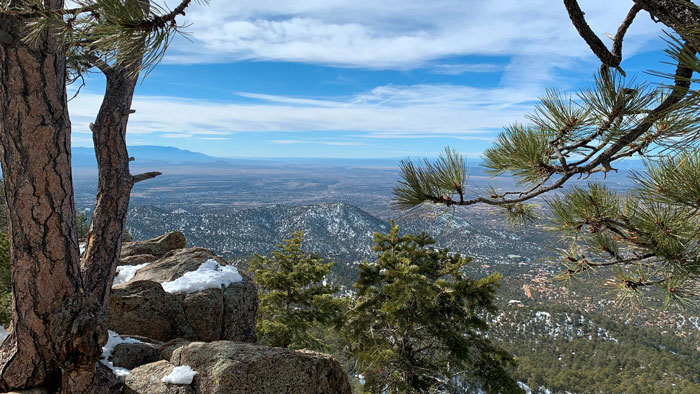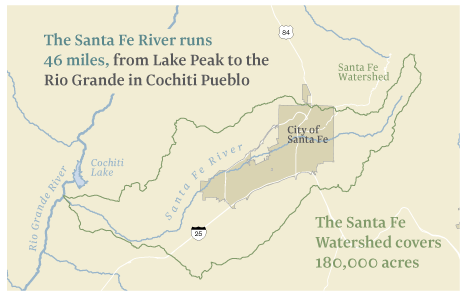
Overview
The Santa Fe River is our original water supply, and for thousands of years, people have visited and lived along the river. It has long provided a valuable water source for wildlife habitat, drinking water, irrigation, recreation, and cultural needs. Today we bypass some of our storable flows to support the Living River and traditional acequias. The rest provides approximately 37 percent of our drinking water supply via the McClure and Nichols Reservoirs.
A pristine water source, the Santa Fe River begins east of the City of Santa Fe in the high country of the Sangre de Cristo Mountains at Santa Fe Lake. It naturally flows downstream from the lake, picking up additional runoff from the watershed, and flows into our reservoirs before being treated at the Canyon Road Water Treatment Plant. This keeps our water collection and distribution costs low compared to communities that require extensive pumping to get water to homes, businesses, and wherever else it needs to go.
The Santa Fe River Watershed covers over 180,000 acres (285 square miles) and is made up of the main course of the Santa Fe River, along with all the streams, arroyos, and water courses that flow into it. As the river flows through our City, the watershed gathers all the water that flows from streets, parking lots, buildings, and residents' front and back yards. Everything within the area flows to and is a part of the river system and watershed. The City of Santa Fe (with Santa Fe County as an active partner) is pursuing a broad range of actions to improve the river and its watershed. Learn more about these activities on the Public Works website.
Santa Fe Municipal Watershed (Upper Watershed)
The Santa Fe Municipal Watershed, also known as the upper watershed, encompasses more than 17,000 acres and makes up approximately 10 percent of the wider Santa Fe River Watershed. It is located northwest of the City of Santa Fe in the public lands of the Santa Fe National Forest. This section of the watershed is densely populated with trees such as ponderosa pine, white fir, and Douglas fir. Over the past hundred years, changes in forest structure and fuel accumulations have made these forests susceptible to fire hazards, which can pose a risk to our water supply.
The Santa Fe Municipal Watershed was closed to the public in 1932 by order of the U.S. Secretary of Agriculture to protect water quality from the effects of grazing, logging, erosion, and overuse. The City of Santa Fe also takes a proactive approach to safeguarding the upper watershed by using mechanical thinning of vegetation and prescribed burns to maintain the forest around our two reservoirs, McClure Reservoir and Nichols Reservoir. Scroll down to Reports to read the Municipal Watershed Plan and learn more about how we will protect the upper watershed for the long term.
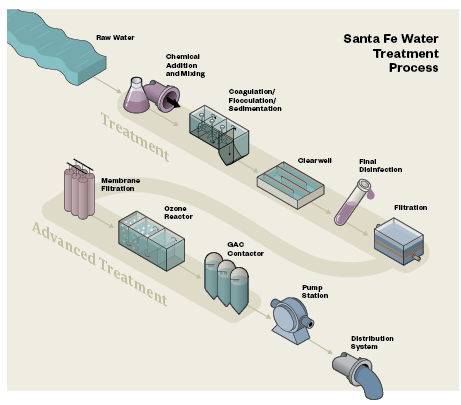
Canyon Road Water Treatment Plant (CRWTP)
Water from the Santa Fe River is stored at the Nichols and McClure Reservoirs before traveling through a 3,500-foot raw water supply pipeline to the Canyon Road Water Treatment Plant (CRWTP). Water is treated at the CRWTP before being distributed to Santa Fe homes, businesses, and other users.
The CRWTP can treat 8 million gallons of water per day (also known as MGD in the industry) and uses a conventional treatment process with free chlorine disinfection. It was originally built in 1972 and has since continued to provide Santa Fe with high-quality water.
Beginning in 2022, the City of Santa Fe Water plans to start upgrades to the Plant's flocculation and sedimentation basins. This project will update aging and failing infrastructure and result in more efficient water treatment processes. It is expected to take several years and cost approximately $14 million.
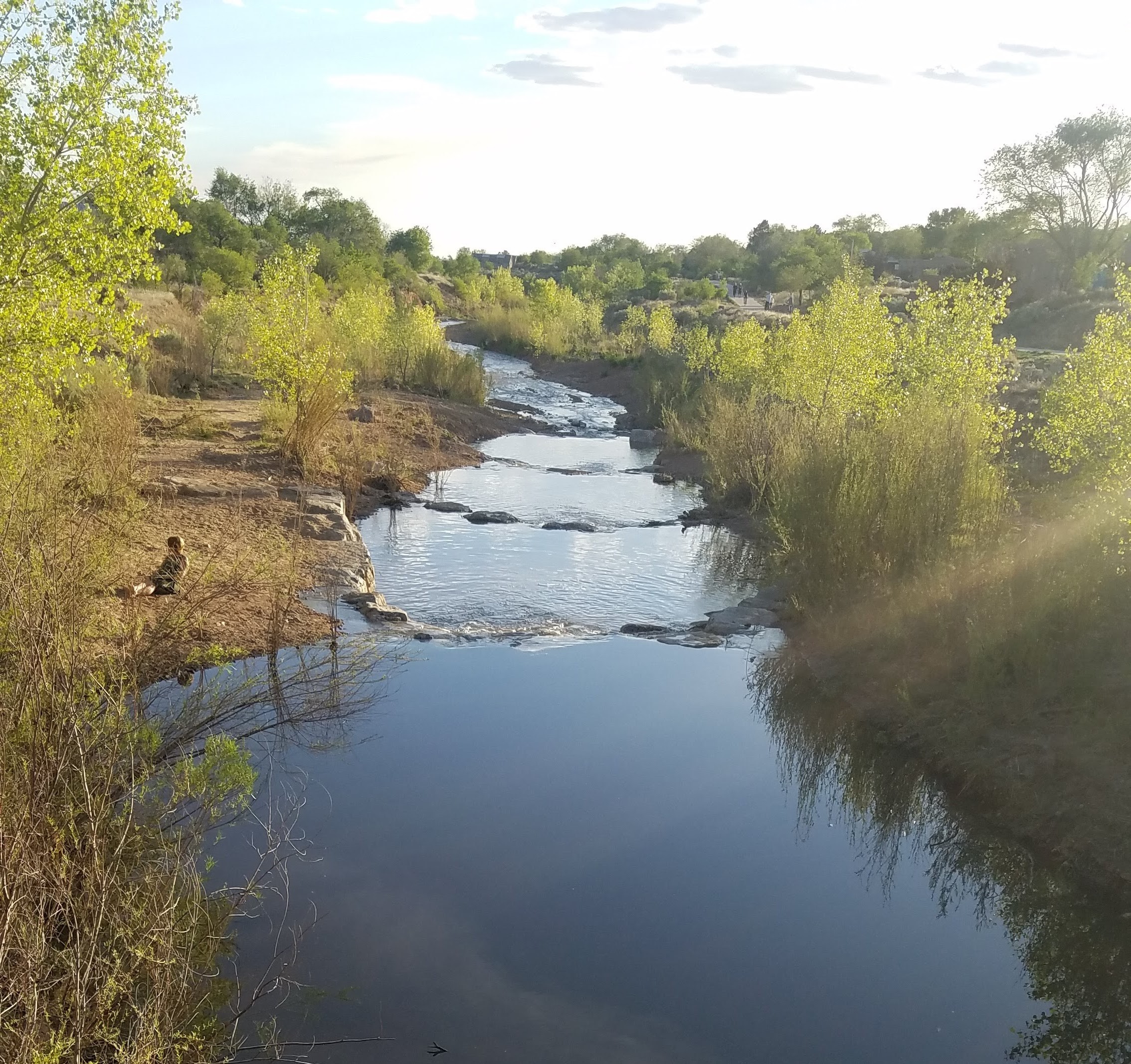
Middle River And The Living River
The 'Living River' is the middle portion of the Santa Fe River that flows east to west through the City, just south of Santa Fe Plaza. Historically, Santa Fe River flows have been year-round (or nearly year-round), but today, the river channel runs dry for much of a typical year. In 2012 the City of Santa Fe announced it would dedicate as much as 1,000 acre-feet per year to the Living River to support the Santa Fe River's riparian corridor. The Living River supports a healthy plant community and wildlife habitat, recharges the City Wells, and adds the beauty of free-flowing water to the parklands along the Santa Fe River.
Other benefits of a green river corridor include shading and cooling the urban environment, helping to clean stormwater runoff, and controlling erosion. The Living River Ordinance has also positioned Santa Fe to participate in initiatives such as the 2020 certification of the City as a LEED platinum City, designation as a Bee's City USA, and the Tree Canopy initiative. The amount of water released each year depends on the amount of water held in upstream reservoirs as well as runoff forecasts for the spring. Target flows begin in April and run through July, often in coordination with events such as the San Ysidro Church's blessing of the Santa Fe River and the annual Children's Fishing Derby.
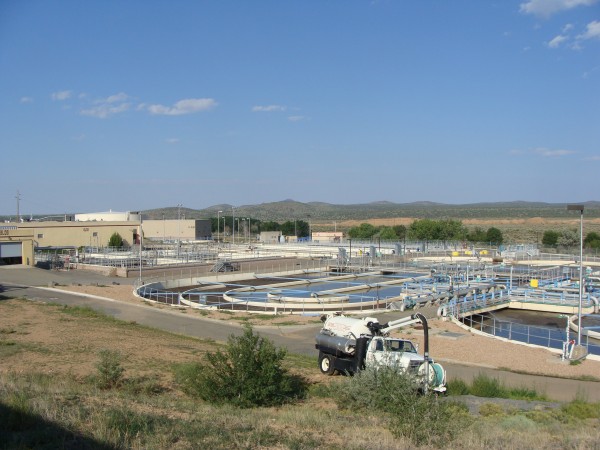
Paseo Real Water Reclamation Facility (PRWRF)
The Paseo Real Water Reclamation Facility (PRWRF) is located on Airport Road and is operated by the Wastewater Management Division. All the water that goes down your drain or flushes down the toilet is collected by Santa Fe's sewer system and sent to the PRWRF, where it is treated to meet all state and federal standards. Unlike our water treatment plants, which can rotate operations and shut down for occasional maintenance, the PRWRF has been operating continually for decades.
Most of the cleaned water that leaves the PRWRF is returned to the Santa Fe River, while some is used for irrigation for large facilities, including the Marty Sanchez golf course, the soccer fields at the Municipal Recreation Complex, SWAN Park, and the Santa Fe Country Club. In 2020, over 1,200 acre-feet of treated effluent water from the PRWRF was used for irrigation, reducing the overall use of valuable drinking water. Learn more about the treatment processes at the PRWRF on the Wastewater Division website.
Reports
City of Santa Fe Source Water Protection Plan 2021 Draft
Santa Fe Municipal Watershed Plan 2010-2029
2009 Santa Fe River Study Series

